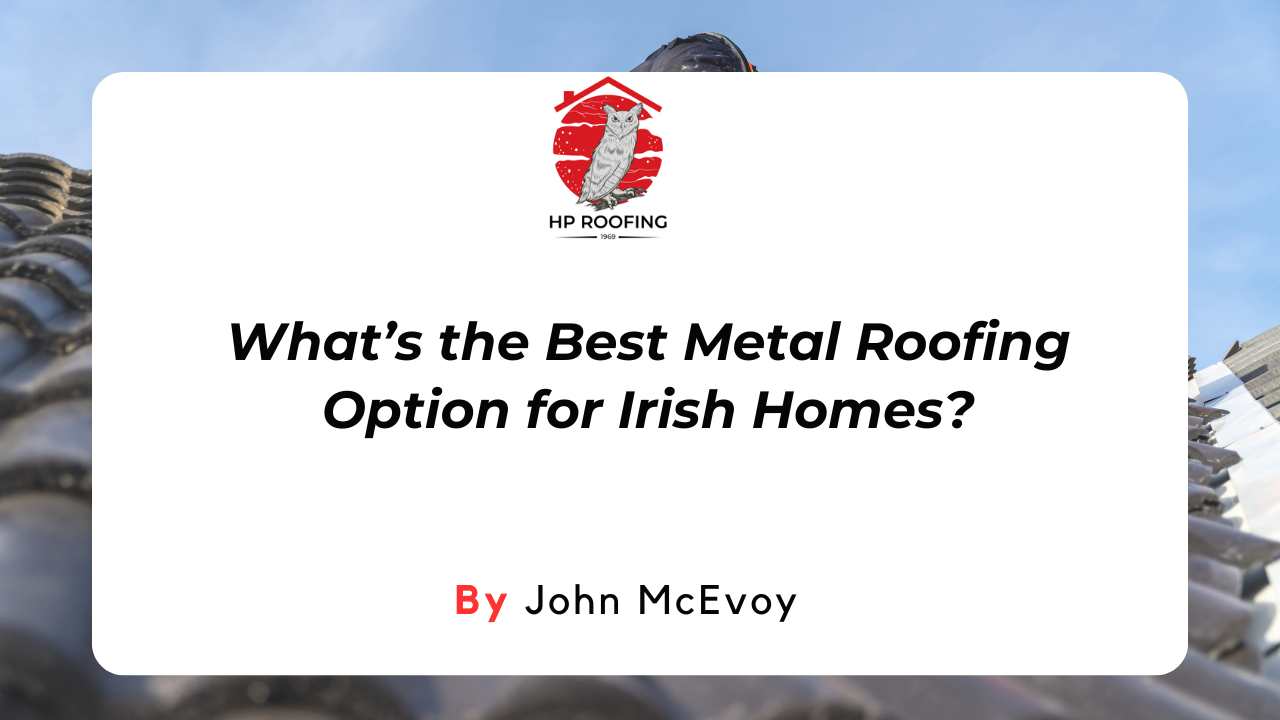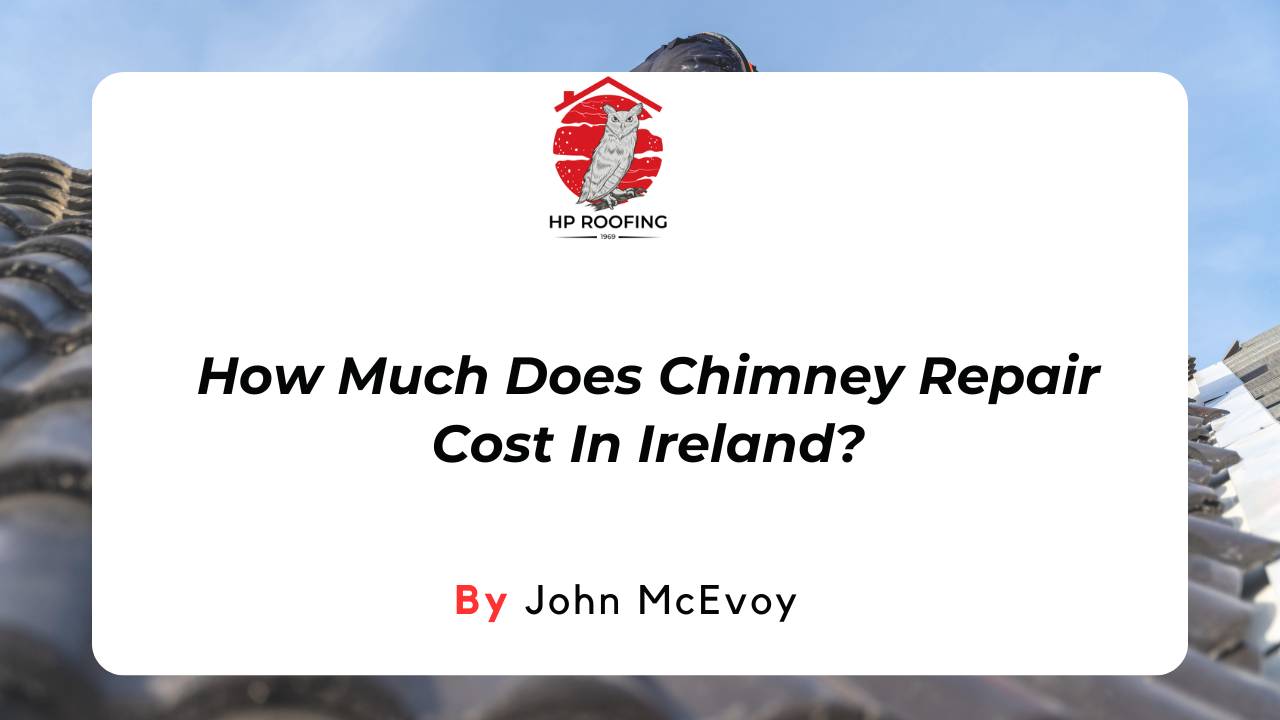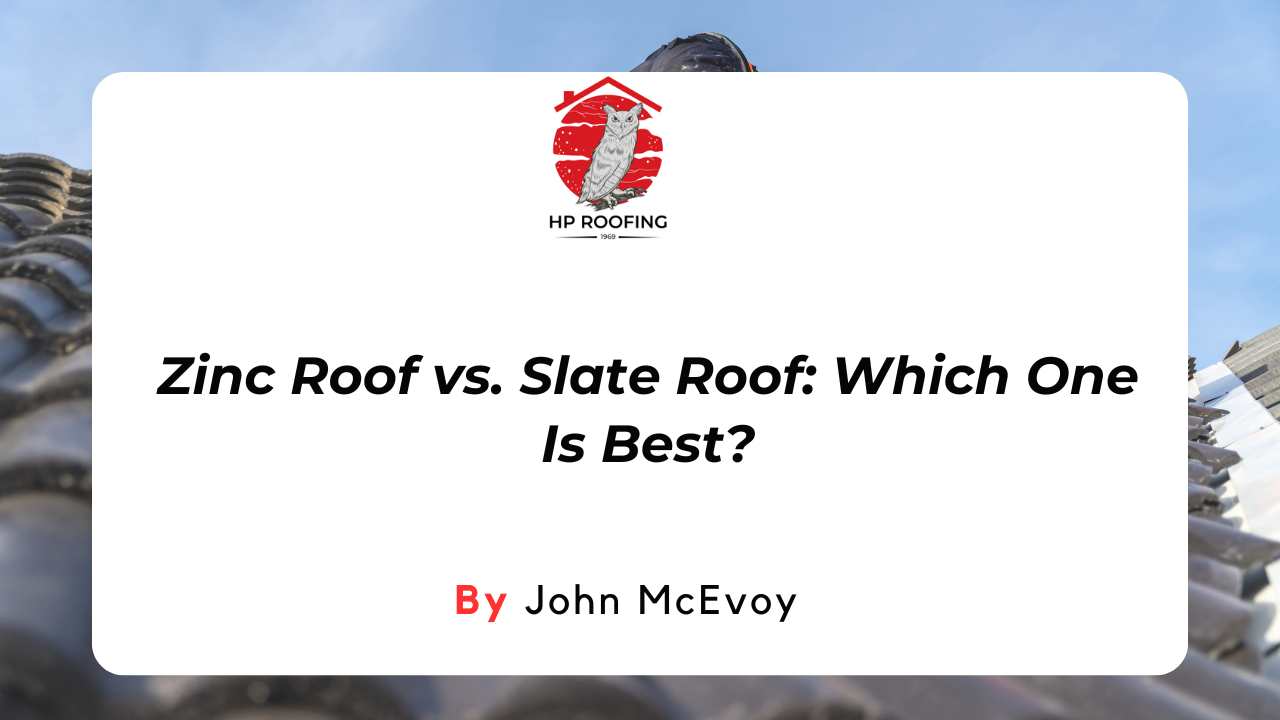Are you looking for the best flat roof option in Ireland? Not sure what the best material is for a flat roof?
Look no further! We have all the information you need to make an informed decision when it comes to choosing the right flat roofing material for your home or business.
Each roof has its pros and cons and different installation requirements. Below, we have outlined the most commonly used flat roof materials so you can decide which is suitable for your project. So, let's go!
1: EPDM membrane roofing
EPDM membrane roofing is one of the most popular flat roof options due to its affordability and durability. EPDM, or ethylene propylene diene monomer, is a synthetic rubber roofing membrane that stands up to all types of weather.
Pros:
- It is long-lasting and resistant to ozone, oxidation, and UV radiation, making it a great choice for areas with extreme temperatures and weather conditions.
- It also has excellent wind, hail, snow, and heavy rain resistance. EPDM membranes are lightweight and easy to apply, making them a great option for DIYers.
- They require little maintenance, and repairs can be quickly done with a patch kit.
Cons:
- EPDM roofs can be prone to punctures and tears if not installed correctly, and they are not ideal for areas with frequent high winds or snow.
- They are only available in dark colours and can become hot in direct sunlight. Despite these limitations, EPDM roofs provide a strong and cost-effective solution for roofing needs.
2: Built-Up Roofs
Built-up roofs (BUR) are another popular material for flat roofing. A BUR consists of multiple layers of asphalt, each protecting the roof from different elements.
Pros:
- BURs are incredibly durable and can withstand heavy winds, rain, hail, snow, and extreme temperatures.
- They are also quick and easy to install, making them a great choice for those on a tight budget.
- While BURs require more maintenance than other roofing materials, such as foam or rubber roofs, they are still a great choice for those looking for an affordable and durable roof. BURs are fire-resistant and have a long lifespan.
- Built-up roofs offer great protection and add value to any home or commercial building.
Cons:
- They can be difficult to repair in certain areas and are prone to leaking.
- They require regular maintenance and may be replaced more often than other roofing materials.
- BURs are heavy and require additional structural support for larger buildings.
3: Roofing Felt
Roofing felt is another popular material for flat roofs. Roofing felt is made of a layer of waterproof material, such as asphalt, with a layer of felt laid on top.
Pros:
- This type of roofing is the cheapest and an ideal option for do-it-yourselfers who want a low-cost, fast option.
- It can be a good option for areas with low rainfall or where the roof won’t be walked on often.
Cons:
- It doesn’t last as long as other options. Roofing felt must be replaced more often than other materials, so the cost savings can quickly disappear.
- It also requires more maintenance and is prone to leaking if not installed correctly.
4: Modified Bitumen Roofing
Modified bitumen roofing is a popular choice for flat roof materials. This type of roofing consists of layers of modified asphalt and other plastic-based materials that are applied in sheets and heated to create a durable seal.
Pros:
- Modified bitumen roofing is relatively easy to install and provides excellent protection against water and other elements.
- It is also very cost-effective, making it a great choice for those looking to save money on their roof installation.
- Modified bitumen can last up to 20 years with proper maintenance and is resistant to fire, hail, wind, and extreme temperatures.
Cons:
- It may require more maintenance over its lifespan than other options, as the plastic materials can degrade in extreme weather conditions.
- Modified bitumen can be difficult to repair if it gets damaged.
5: PVC Membrane Roofing
PVC membrane roofing is a durable and affordable option for flat roofs. This type of roofing consists of sheets of PVC plastic that are joined together and sealed with special adhesives.
Pros:
- This type of roofing is resistant to both harsh weather conditions and fire, making it an ideal choice for commercial and residential buildings.
- PVC membrane roofing is readily available, easy to install, and requires minimal maintenance.
- It is also a great choice for an energy-efficient solution, as it reflects the sun’s rays and reduces cooling costs.
- PVC membrane roofing is available in various colours and textures to suit any building’s aesthetic.
Cons:
- PVC membrane roofing is not suitable for areas that experience a lot of snow or ice, as it can become brittle and crack in extreme temperatures
- It is also not as durable as other options and may need to be replaced more often.
- It can be quite expensive compared to other roofing options
- It is also not as environmentally friendly as other materials, such as metal or rubber roofing
6: Standing Seam Metal Roofing
Standing-seam metal roofing is another popular and durable solution for flat roofs. This roofing type comprises panels of long-lasting galvanised steel, aluminium, or zinc. The panels lock together to form a continuous roofing surface without any spaces for water to seep through.
Pros:
- This type of roofing is attractive and can be customised to fit any home style.
- Standing seam metal roofing is also very light, so it does not put a lot of extra weight on the structure.
Cons:
- The only downside to standing seam metal roofing is that if the panels are damaged, they must be replaced. This can be a costly and time-consuming endeavour. However, with proper maintenance and timely repairs, these roofs can last many years and provide excellent protection.
How Much Does a Flat Roof Cost in Ireland?
Flat roofs are one of the most cost-effective roofing options in Ireland. Depending on the material you choose, your flat roof can last anywhere from 15 to 50 years or more, making it an excellent choice for commercial and residential buildings. However, the cost can vary significantly depending on the size of the roof and the material used.
For example, a flat roof will cost around €120 per square metre installed. This price includes labour, material, and disposal costs. Depending on the material used, you’ll also need to factor in additional costs, such as EPDM rubber membrane and fibreglass shingles.
Final Thoughts
Flat roofs have unique benefits, making them a great option for many homes. Moreover, they are cheaper to install and maintain than traditional pitched roofs and can be more resistant to weather damage. Several types of flat roofing materials are available, so you can choose the one that best fits your needs and budget. So, if you're considering installing a flat roof on your home, consult a professional contractor who can help you choose the best flat roof options for your home.
















